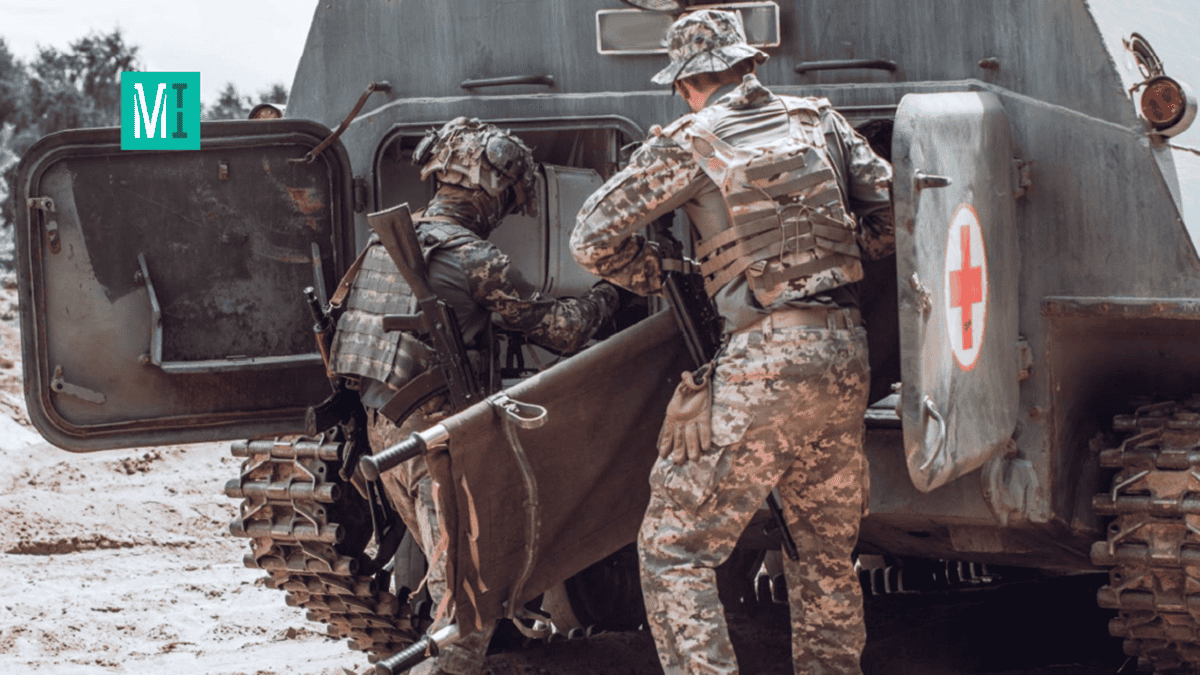
When a Ukrainian soldier receives shrapnel from the explosion of a mine or some ammunition launched from a drone, survival depends on a few seconds. Those seconds now belong to artificial intelligence.
In the midst of the war with Russia, Ukraine has become an unexpected testing field for AI Battlefield Medicine. A new study presented this week at the Clinical Congress of the American College of Surgeons In Chicago it reveals how portable devices with artificial intelligence technology, smart hulls and classification algorithms are transforming attention to injured soldiers: accelerating treatment, guiding the administration of medicines and even helping to design prostheses.
“Although we do not know the scope of improvement, there is clear, consistent and solid evidence that the AI led to a faster identification of potentially mortal injuries, a faster arrival of more solid supplies and medications and rehabilitation results,” said Dr. Evgeni Kolesnikov of the National University of Shopyk Medical Care of Ukraine.
From triage to treatment

The 68 soldiers of the Kolesnikov study carried devices such as electrocardiographers, glucose and blood pressure monitors, multisensorship vital patches and advanced smart hulls. These devices continually transmitted data such as heart rate, oxygen levels and movement to artificial intelligence systems trained to recognize signs of anguish.
But the magic was not in the hardware. It was how AI made life or death decisions.
When morphine or tranexamic acid supplies were exhausted, AI decided who needed them more. He evaluated the lesions, the vital signs and the probabilities of survival of each soldier and then prioritized the treatment. He even calculated the optimal drug dose for shock, pain or infection. What previously required minutes of human judgment, can now happen in seconds.
In a war where doctors are usually overwhelmed or even under fire, those seconds can save lives. “AI does not replace doctors and surgeons,” said Kolesnikov. “But it expands its capabilities, reducing evacuation times, increasing the accuracy of diagnosis and surgical treatment, helping to save more lives with limited resources.”
Ukrainian researchers reported that AI helped identify biomarkers of poor healing and risk of infection, which allowed doctors to intervene before conditions worsened. It also analyzed millions of chemical structures to find compounds that could stop bleeding or accelerate tissue regeneration, even reusing existing anti -inflammatory medications for faster recovery after explosion lesions.
Perhaps the most surprising thing is that AI is also remodeling the lives of injured Ukrainian veterans. Using 3D image scan of damaged limbs, algorithms now design personalized prostheses with millimeter precision. The result: less painful pressure points, faster healing and better mobility for amputates.
The next generation of war medicine

The Ukrainian medical system does not work with a single “central brain.” Instead, use modular AI systems: one for classification, another for optimization of routes and others for interpretation of images and logistics. These modules are coordinated through command and control platforms, guiding doctors and even machines.
When rescuing an injured soldier is too dangerous for humans, autonomous vehicles equipped with AI navigation systems can now lead to active combat areas, locate the injured and transport them to a safe place.
This distributed model of AI on the battlefield shows how the future of military medicine could be. But for Ukrainians, innovation was not an option. With limited personnel, scarce medical supplies and constant bombings, Ukrainian researchers have turned the need into innovation.
However, this high -tech transformation also raises uncomfortable questions. How much control should algorithms have on classification decisions? What happens when communications fail or the systems misunderstand the data in the chaos of the war?
These questions become even more urgent as other research teams further drive AI medicine.
Innovation for trenches
In Kharkiv, Kyrylo Smelyakov of the National University of Radioelectronics It is developing an AI that analyzes computerized tomographies of shrapnel woundsdetermining the material and urgency of the transfer. His team is working with Greg Gibbons from the University of Warwick, the United Kingdom, who prints in 3D synthetic human fabrics embedded with different types of shrapnel (metal, glass and even wood) to train the AI with precision data.
“Ideally, [the AI] “It will be able to predict with a 100 percent accuracy what the result will be for that patient, what treatment it needs, if it is immediately critical, if they need to be removed or if it can be left,” Gibbons said in New scientist.
The Smelyakov laboratory attends to three new patients with shrapnel every day. The most difficult cases involve fragments of less than 5 millimeters or housed near the arteries. With the help of AI, it hopes to make faster and faster surgical decisions in hospitals to the limit.
Naeem Ramzan, from the University of West of Scotland, added that “these [types of AI model] “This will help reduce treatment time and also save lives, because if you have injuries that endanger your life, it is always beneficial to have a quick response.”
From the trenches to the traumatology rooms, the innovations of Ukraine in times of war could also change civil medicine. Real -time classification algorithms could guide the emergency response in natural disasters. Portable sensors that monitor vital signs under stress could become standard in hospitals or ambulances.
For now, the 68 soldiers of the Kolesnikov study offer an idea of how AI can work in the most hostile environment: an active war zone.
#artificial #intelligence #reinventing #battlefield #medicine #Ukraine










